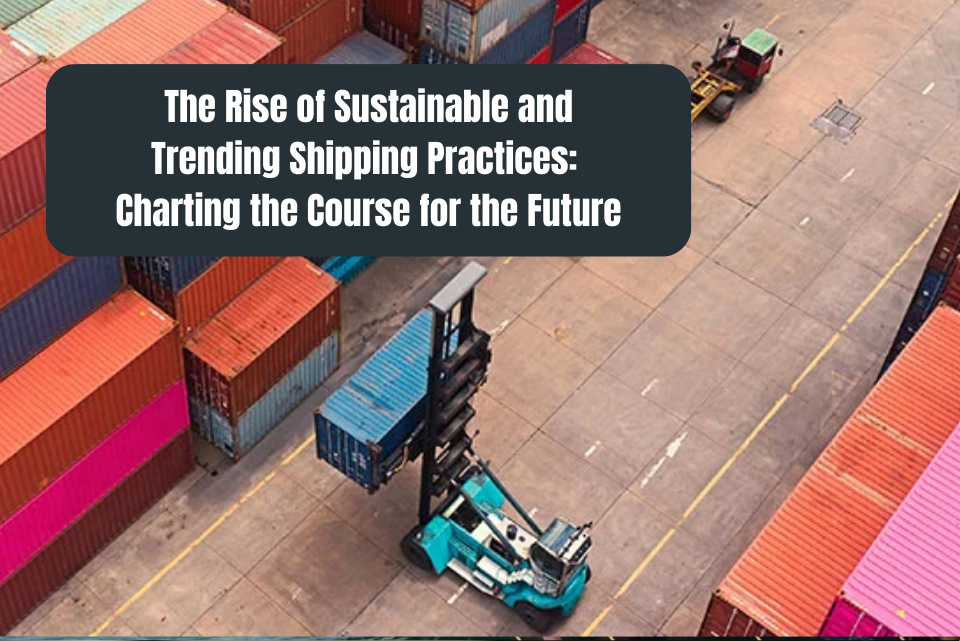Shipping is an integral part of global commerce, a sector that has long been characterized by massive fuel consumption, considerable carbon emissions, and an overall significant environmental footprint. However, the tides are turning. New, sustainable shipping practices are becoming trending benchmarks for the industry. These initiatives don’t just reduce ecological impact—they often improve operational efficiencies and foster better relations with environmentally conscious consumers. Here’s a comprehensive look at some of the sustainable and trending shipping practices reshaping this essential industry.
Slow Steaming: Speed vs. Sustainability
Slow steaming—reducing a ship’s speed to minimize fuel consumption—is gaining traction as a sustainable shipping practice. While this approach may increase shipping time, the benefits include significant fuel savings and reduced CO2 emissions. For companies and consumers prioritizing sustainability over speed, slow steaming has become a popular choice.
LNG-Powered Vessels: A Greener Alternative
Liquid Natural Gas (LNG) is emerging as an alternative fuel for shipping vessels. While not entirely carbon-neutral, LNG emits far fewer pollutants compared to traditional fuels. Adopting LNG-powered vessels is a trending practice in shipping circles keen on reducing their environmental impact.
Ballast Water Management: Protecting Marine Ecosystems
Ships take on ballast water to maintain stability during their journey. This water often contains a mix of marine species, which, when discharged in foreign ecosystems, can be invasive and harmful. Ballast water management systems treat this water before releasing it, reducing ecological risks and adhering to international regulations.
Green Ports: A Commitment to Eco-friendly Operations
The concept of green ports is emerging as a pivotal sustainability initiative. Ports adopting this trend are implementing solar and wind energy sources, green building codes, and waste management systems that contribute to lowering the industry’s environmental impact.
Zero-emission Technologies: Pushing the Boundaries
Investment in zero-emission technologies like hydrogen fuel cells and battery-electric ships is a trend that is picking up steam. Though these technologies are in their infancy and come with a high upfront cost, they hold the promise of entirely emission-free shipping in the future.
Digital Twins and AI: Smart Shipping
Digital Twins, which are virtual replicas of physical systems, and Artificial Intelligence (AI) are being used to monitor and optimize shipping operations. These technologies enable real-time decision-making that can reduce fuel consumption, optimize routes, and improve overall efficiency, thus contributing to more sustainable operations.
Recycling and Upcycling: Circular Economy in Shipping
A growing trend in the shipping industry is the shift towards a circular economy. Companies are looking at ways to recycle and upcycle ships, containers, and packaging materials. From turning decommissioned ships into artificial reefs to using recycled materials for packaging, these practices contribute to sustainability.
Blockchain for Transparency: Ethical Shipping
Blockchain technology is being used to create transparent and unchangeable ledgers of how goods are sourced, shipped, and received. This transparency is essential for verifying the ethical and sustainable practices of shipping companies, offering an additional layer of accountability.
Ship Energy Efficiency Management Plans (SEEMP)
SEEMP is becoming a standard practice for managing and improving energy efficiency in ships. This involves a holistic approach that integrates several of the aforementioned practices to optimize energy usage continually. Compliance with SEEMP not only leads to a reduced environmental footprint but is increasingly becoming a factor that clients consider when choosing a shipping partner.
Consumer-driven Trends: Eco-labels and Carbon Offsets
More consumers are demanding transparency in the shipping methods used to deliver their products. Eco-labeling, which indicates that a product has been shipped using sustainable practices, and offering carbon offset options at checkout are trends driven by customer demand.
Conclusion
Sustainable and trending shipping practices are revolutionizing an industry notorious for its adverse environmental effects. Companies adopting these measures are finding that sustainability and profitability are not mutually exclusive but can, in fact, go hand in hand. As technology continues to advance and more sustainable practices are developed, the shipping industry is on course for a greener, more responsible future. By recognizing and adapting to these trends, shipping companies can not only improve their ecological footprint but also secure a competitive edge in an ever-evolving market.



